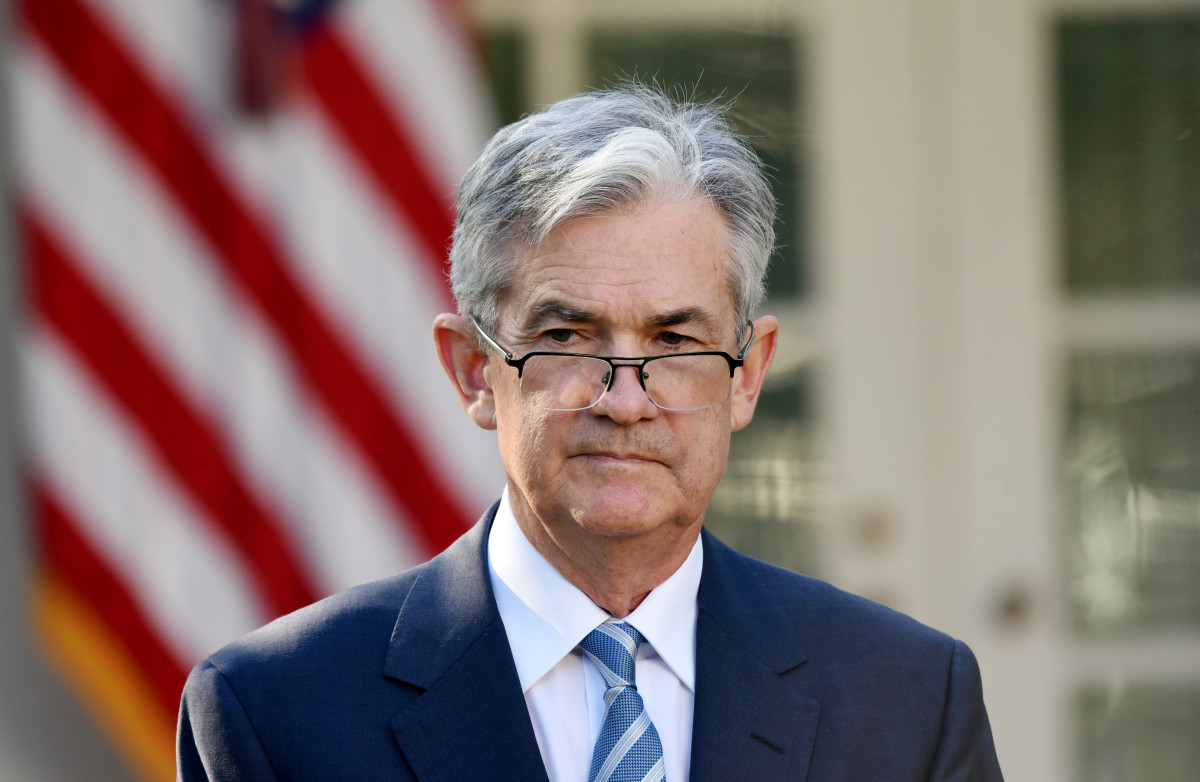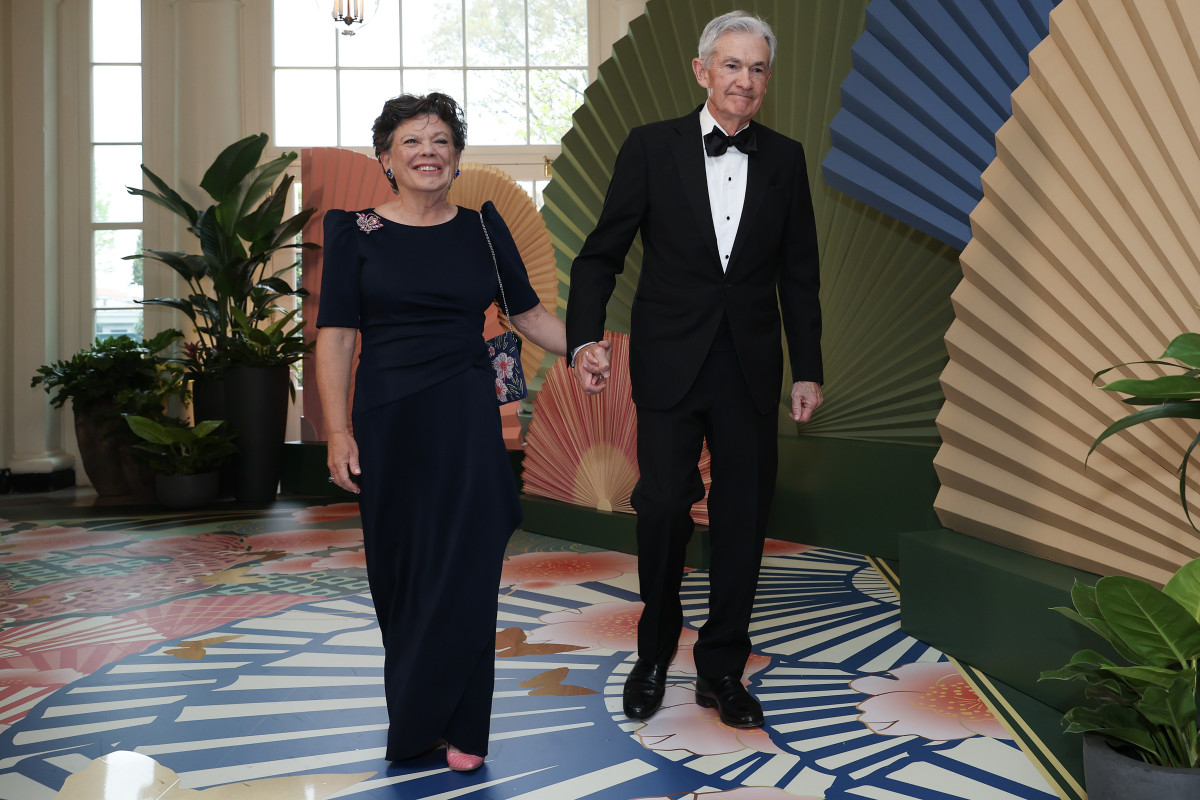
Jerome “Jay” Powell is an American investment banker who serves as the 16th Chair of the U.S. Federal Reserve.
Powell was first appointed to the Federal Reserve Board of Governors by President Barack Obama in 2012 before his elevation to the position of Fed Chair by President Donald Trump on February 5, 2018. His term runs through May 2026.
What is Jerome Powell known for?
Powell is known for his middle-of-the-road views and has enjoyed support across the political spectrum. His unique experience at nearly every level of private and federal fiscal operations positioned him well for the demands of the Fed Chair position.
Jerome Powell's salary and net worth
His current salary is $190,000 per year, and financial disclosure documents submitted at the time of his appointment revealed his net worth was somewhere between $20 and $55 million.

Olivier Douliery/Bloomberg via Getty Images
What does Jerome Powell do as Chair of the Federal Reserve?
The Fed Chair is unequivocally one of the most powerful people on the planet — some say they are the second-most influential government official after the U.S. President, although technically, the Federal Reserve is an independent government agency since it does not receive government funding. Rather, it gets its money from interest earned on securities acquired through its open market operations.
In 2022, the Federal Reserve’s reported net income was $58.4 billion, while in 2023, it reported a loss of $14.3 billion due to its monetary-tightening efforts (operating expenses at its 12 regional banks tallied more than $5 billion alone), as well as continuing efforts to reduce its balance sheets.
However, the Fed emphasizes that its income fluctuates year-to-year and that negative net income does not affect its ability to conduct monetary policy.
More prominent financial figures:
- Who is Bernie Madoff? An overview of the infamous investor's life & death
- Steve Wozniak’s net worth: The Apple cofounder’s wealth in 2024
- Bernard Arnault’s net worth: How LVMH's CEO got rich
As the leader of the Federal Reserve, the Fed Chair serves as a spokesperson to the American public.
Every six weeks, during its Federal Open Market Committee (FOMC) meeting, the Board of Governors and Reserve Bank Presidents decide whether to increase, decrease, or maintain the Fed funds rate to keep the economy healthy. At the end of the meeting, the Fed Chair gives a press conference detailing FOMC policy statements.
Related: What Is Inflation? Definition, Formula & What It Means For You
But the Fed Chair is more than just a figurehead; they are also in charge of all aspects of the Federal Reserve’s day-to-day operations, including its monetary policies. The Fed Chair weighs in on critical economic decisions and serves as the head of the Board of Governors, where they also help to determine the discount window, which provides emergency assistance to banks in distress.
Simply put, the Fed Chair has their hand in overseeing nearly every aspect of the American financial system — that’s why when they speak, the whole world listens.
Upcoming Jerome Powell speech dates
- July 31, 2024
- September 18, 2024
- November 7, 2024
- December 18, 2024
Meetings are available for live streaming on the Federal Reserve's website.
What was Jerome Powell’s early life like?
Jerome Powell was born on February 4, 1953, in Washington, DC. His father was an attorney and his mother a mathematician. Powell attended Georgetown Preparatory, an elite private high school in Maryland, before enrolling at Princeton University, where he studied politics. After graduation, Powell attended Georgetown University Law Center where he served as editor-in-chief of the Georgetown Law Journal. He received his law degree in 1979.
In 1985, Powell married Elissa Leonard, a producer and writer for PBS. They have three children and live in Chevy Chase, Maryland.

Tasos Katopodis/Getty Images
Powell’s career trajectory
Powell’s first jobs included clerking for the United States Court of Appeals and practicing law with several private firms in New York City. In 1984, he accepted a position at the investment bank, Dillon, Read & Co., and eventually was promoted to the position of vice president. His work focused on finance, mergers and acquisitions, and merchant banking services.
In the 1990s, Powell worked at the United States Treasury and was appointed by President George H.W. Bush to the position of Under Secretary of the Treasury for Domestic Finance. He then returned to the private sector with executive positions at Bankers Trust and the private equity firms of The Carlyle Group and Global Environmental Fund. He founded his own firm, Severn Capital Partners, in 2005.
Powell worked as a Visiting Scholar at the Bipartisan Policy Center in Washington, DC, until May 25, 2012, when he was appointed to fill a vacancy on the Federal Reserve's Board of Governors.
Related: What was Japan’s lost decade? How did it happen?
Why is Jerome Powell unpopular?
A Gallup poll released in May 2024 revealed that only 39% of Americans have a “great deal” or “fair amount” of confidence in the job Jerome Powell is doing. This marked the lowest approval rating of any Fed Chair since Gallup began measurements in 2001. There are a few reasons why:
Rising prices
In the aftermath of the COVID-19 pandemic, the U.S. economy reeled from inflationary pressures that caused prices for groceries, utilities, and gas to skyrocket more than 20%.
Since it’s the main job of the Federal Reserve to promote stable prices for the American people, critics took Powell to task for repeatedly labeling the inflationary pressures as “transitory” when these pressures, in fact, ran much deeper. In a speech to Congress in November 2021 he stated that “the term ‘transitory’ should probably be retired.”
Hawkish policies
Powell has also received criticism for hawkish actions such as hiking interest rates 11 times to 5.25% in a little over one year — an action another Fed Chair, Paul Volcker, proved was painful yet effective in overcoming the stagflation that had crippled the U.S. economy in the 1970s.
Acknowledging public dismay at his actions, Powell reiterated that stemming inflation involves “measures that are not popular” at a January 10 global panel event in Sweden.
Powell continued to reassure the public that the Fed’s bold actions in swiftly raising rates would result in a soft landing for the U.S. economy instead of steering it into recession.
"I continue to think there’s a path to getting inflation back to 2% without a significant economic decline or significant increase in unemployment,"
—Jerome Powell, February 2023 FOMC press conference.
Fear of financial contagion
The Fed Chair had also been under fire for mounting fears of financial contagion after the failures of several high-profile regional banks in the spring of 2023: Silicon Valley Bank (SVB), which collapsed after its high-net-worth customers started a bank run; Signature Bank, which dealt largely in toxic cryptocurrency; and First Republic Bank, which, like SVB, was a big lender to volatile tech startups.
Powell tried to restore confidence on Wall Street by reassuring investors that the U.S. banking sector is “sound and resilient” while the Fed conducted investigations into the failures. In addition, the Fed established new ways to help troubled banks, such as the one-year, low-interest funding source known as the Bank Term Funding Program.
Related: Veteran fund manager picks favorite stocks for 2024







